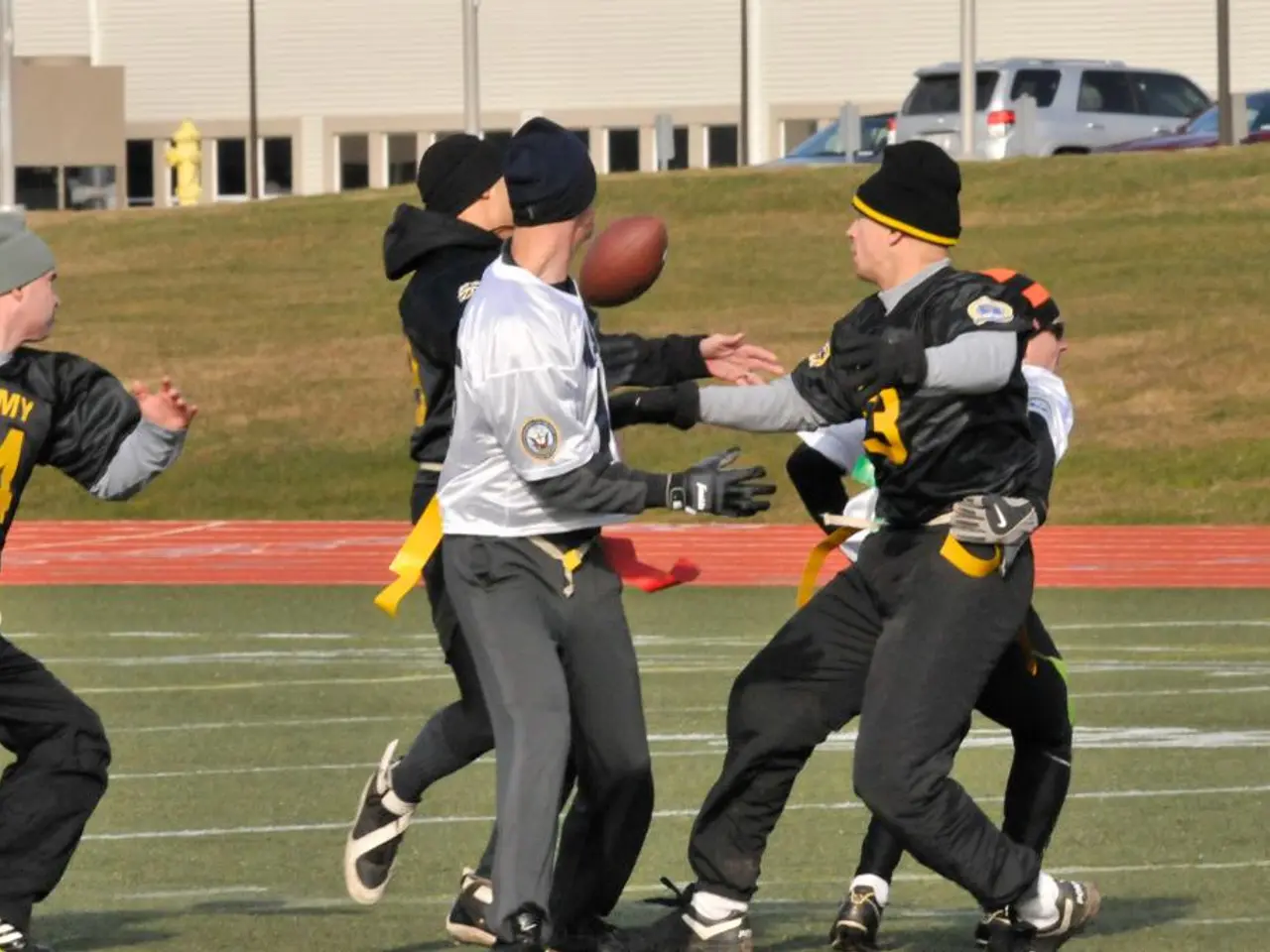Boxing's Operational Mechanics
Boxing, a sport steeped in history and cultural significance, has its roots traced back over 5,000 years to ancient civilizations such as Egypt, Mesopotamia, and Greece. Known then as pugilism, this brutal and respected sport made its mark in the Olympic Games as early as 688 B.C.E., focusing on raw strength and honour with few rules [1][3].
Notable Characters
Throughout its history, boxing has been graced by some of the most formidable figures. James J. Jeffries and Bob Fitzsimmons, pioneers in the world heavyweight boxing championships in the late 19th and early 20th centuries, helped establish the sport's early global recognition [2]. Lennox Lewis, a dominant British heavyweight champion of the 1990s and early 2000s, is remembered for his technical skill and powerful knockouts, having defeated legends like Mike Tyson, Evander Holyfield, and Vitali Klitschko [2].
Sonny Liston, heavyweight champion in the early 1960s, was famous for his punching power and controversial bouts with Muhammad Ali (then Cassius Clay). His career and life, however, were marred by mysterious circumstances [4]. Mike Tyson, a young prodigy who became the youngest heavyweight champion in history at age 20, is known for his knockout power and unifying multiple heavyweight titles in the late 1980s [5]. Other key figures include middle- and welterweight greats like Roberto Durán, Wilfred Benitez, Sugar Ray Leonard, and Marvin Hagler, who defined a golden age with memorable fights and diverse styles [5].
Controversies and Significant Moments
Boxing's history is not without its share of controversies. The infamous draws and rematches between Lennox Lewis and Evander Holyfield, with some fights criticized for controversial scoring, are a testament to this [2]. Sonny Liston's sudden injuries and loss to Muhammad Ali, coupled with his mysterious death shortly after retirement, have fueled decades of speculation and conspiracy theories [4]. Mike Tyson’s rapid rise and subsequent personal and professional challenges marked a dramatic chapter in boxing history [5].
Early boxing had few rules, often leading to brutal and prolonged battles. Later modern history involved scandals over decisions, judging biases, and concerns about fighter safety [1][5].
Important Moments
Boxing's rich history is marked by several milestones. The introduction of boxing at the ancient Olympic Games in 688 B.C.E. established its long-standing cultural significance [1][3]. The establishment of modern professional boxing and the rise of global champions like James J. Jeffries and Bob Fitzsimmons at the turn of the 20th century [2] was another significant moment.
Mike Tyson’s unprecedented knockout streak and eventual unification of heavyweight titles in the 1980s redefined the sport’s excitement and marketability [5]. The transition of boxing into a prominent Olympic sport from 1900 onwards, despite brief bans like the 1912 Stockholm Games prohibition [3], is another notable achievement.
The Modern Game
Boxing today is a sport where two people fight each other using fists in a raised, square platform with a canvas surface. A match can end without a knockout, in which case the winner is determined by judges. Boxers are not allowed to strike below the belt, strike when an opponent is down on the canvas, kick, strike with elbows, forearms or the inside of the hand, head butt, bite ears, grab onto the ropes, poke the eye with a thumb, or wrestle, grapple or hold excessively [6].
A boxer's arsenal consists of four main punches: the jab, hook, uppercut, and cross. A combination is any series of two or more punches in quick succession, such as the jab-cross combo. Boxing gloves are made from padded leather to protect the hands and reduce damage to the opponent [7].
The goal of a boxer is to knock his opponent down so he cannot regain his feet before the referee counts to ten, which results in a knockout. An uppercut is almost always thrown with the right hand, the arm drops with the elbow pulled back, and the fist is thrown out and up in an arc that connects with the opponent's face, useful for getting under an opponent's defense or when the boxers are close together [7].
A hook is a powerful punch in which the fist arcs out to the side before swinging back in and connecting with the side of the body or head, and can be thrown with either hand [7]. A jab is a straight, low-power punch with the leading (left) hand, often used to test an opponent or "find the range" of the opponent [7].
Defense in boxing begins with a specific stance: feet shoulder-width apart, right foot slightly behind the left foot, right hand held beside the chin, elbow down along the body, and the left hand held out a few inches in front of the face, elbow bent [8]. A boxing match is divided into rounds of two or three minutes, with a one-minute rest period in between [8].
The Path to a Title
To get a shot at a boxing title, a boxer has to work his way up through the ranks by fighting progressively tougher opponents. A jab is a straight, low-power punch with the leading (left) hand, often used to test an opponent or "find the range" of the opponent [7]. The main elements of boxing are attack and defense [9].
A combination is any series of two or more punches in quick succession, such as the jab-cross combo [7]. Boxing defense also involves bobbing and weaving, moving slightly and from side to side to offer a moving target that is harder to focus on and hit [8].
To ensure safety and even fights, boxers are divided into weight divisions [10]. Professional matches are 12 rounds at the championship level, while amateur matches have only three, four or five rounds [10]. The points for all the judges are tallied at the end of the match, and the boxer with the most points (or rounds) is declared the winner [8].
There is one World Champion crowned by a given sanctioning body in each weight division, and different sanctioning bodies may have different world champions in the same weight division [10]. If a boxer is knocked down, he must retreat to a neutral corner and the referee makes sure he's OK and able to defend himself before the fight continues [8].
If a boxer commits any of the acts mentioned earlier, it may result in a foul, which can cause the deduction of points by the judges [6]. The current title holder is obligated to defend his belt on a regular basis, and if one contender stands out, they will negotiate the terms of the fight [10]. If several contenders seem like they all have an equal shot at the title, they will fight each other in a series of elimination matches to determine one true challenger for the title [10].
In conclusion, boxing's rich, complex history involves cycles of glory, controversy, and evolution, shaped by legendary fighters and memorable bouts that reflect the sport’s enduring appeal across centuries.
Sports such as boxing continue to captivate audiences with its historical significance and the formidable figures who have graced the sport. Lennox Lewis, a British heavyweight champion, showcased technical skill and powerful knockouts, while Mike Tyson, a young prodigy, became the youngest heavyweight champion in history. Other notable characters include James J. Jeffries, Bob Fitzsimmons, Sonny Liston, and Marvin Hagler, who defined a golden age with memorable fights and diverse styles.








